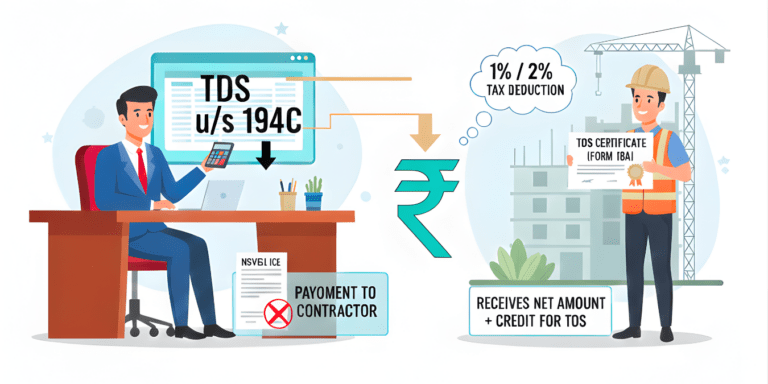
A US-returned Indian faced a tax nightmare—double taxation on RSUs nearly cost lakhs. Form 67, the hidden key to India’s DTAA, saved the day. This 2025 guide unveils how NRIs and residents can claim Foreign Tax Credit, avoid penalties, and slash tax bills.
In 2025, as India’s global workforce and cross-border investments soar, a little-known tax form—Form 67—emerges as a critical safeguard for Non-Resident Indians (NRIs) and resident Indians earning abroad. This statutory declaration, filed with the Indian Income Tax Department, unlocks relief from double taxation under India’s Double Taxation Avoidance Agreements (DTAA). Yet, its importance remains overlooked, often catching taxpayers off-guard with hefty tax bills. This blog unravels Form 67’s pivotal role, weaving real-life stories, 2025 updates, and actionable insights to spark curiosity and ensure compliance.
What is Form 67 and Why It Matters in 2025?
Form 67, mandated under Rule 128 of the Indian Income Tax Rules, is the gateway to claiming Foreign Tax Credit (FTC) for income taxed abroad. It ensures NRIs and resident Indians aren’t burdened by paying tax twice—once in the foreign country and again in India. With India’s DTAA network spanning over 90 countries, including the US, UK, and Singapore, Form 67 is the linchpin for leveraging these treaties. In 2025, as remote work, freelancing, and global investments surge, its relevance skyrockets.
The form requires detailed disclosures: foreign income sources, taxes paid, DTAA country details, and supporting documents like Tax Residency Certificates (TRC) and tax payment proofs. Filing deadlines align with Income Tax Return (ITR) submissions, typically December 31 of the assessment year. Missing this deadline risks losing FTC, leading to substantial financial losses. The Indian government’s 2025 tax updates emphasize online filing via the e-filing portal, with stricter scrutiny to ensure transparency in cross-border income.
Why does this matter? Double taxation can erode significant portions of your income—think salaries, dividends, or capital gains from abroad. Form 67 acts as a shield, ensuring you only pay what’s fair. Its role in 2025’s compliance framework, under Sections 90 and 91 of the Income Tax Act, makes it non-negotiable for anyone with foreign earnings.
A Shocking NRI Wake-Up Call: The Double Taxation Trap
Returning to India after years abroad, confident you’ve ticked every box: apartment lease closed, belongings shipped, and foreign income tracked. This was the reality for Priya, an Indian professional who relocated from California in 2024. Her story, shared on a popular Reddit thread, gripped thousands with its raw honesty. Priya meticulously managed her US-based Restricted Stock Units (RSUs) and 401(k) contributions, assuming her India-US DTAA would automatically prevent double taxation.
The bombshell dropped during her first Indian tax filing in 2025. Her RSU income, already taxed in the US, reappeared in her Indian tax calculations, threatening a tax bill equivalent to six months’ salary. Stunned, Priya learned that DTAA benefits aren’t automatic—Form 67 is the key to claiming FTC. With days to spare before the ITR deadline, she scrambled to gather her TRC, US tax receipts, and income details. Filing Form 67 slashed her Indian tax liability, saving her lakhs. “I thought I’d done everything right,” she wrote. “Form 67 was the hidden step I nearly missed.”
Priya’s story resonates with countless NRIs blindsided by this compliance nuance. It’s a wake-up call: overlooking Form 67 can turn financial dreams into a tax nightmare.
Form 67 Prevent Double Taxation
Form 67 prevents double taxation for NRIs filing Income Tax Returns (ITR) in India by enabling them to claim Foreign Tax Credit (FTC) for taxes already paid on income earned outside India. Here is how it works exactly:
- Disclosure of Foreign Income and Taxes Paid: Form 67 requires the taxpayer to furnish detailed information about their foreign income and the foreign taxes paid on that income. This includes declaring the nature of the income, the country where it was earned, the amount of foreign tax paid, and supporting proof like Tax Residency Certificates (TRC) and foreign tax payment receipts.
- Formal Claim of Foreign Tax Credit Before ITR Filing: Filing Form 67 is a mandatory procedural step before or along with submitting the ITR for the relevant assessment year. It serves as a formal application to the Indian Income Tax Department to grant credit for the foreign taxes paid.
- Application of DTAA or Unilateral Relief Provisions: When Form 67 is filed, the Indian tax authorities review the information and apply the Double Taxation Avoidance Agreement (DTAA) provisions or unilateral tax relief (under Sections 90 and 91 of the Income Tax Act) to allow credit for the foreign taxes paid against the Indian tax liability on the same income.
- Reduction in Indian Tax Liability: The FTC credited via Form 67 reduces the payable Indian tax by the amount of tax already paid abroad, thus preventing the taxpayer from paying tax twice on the same income—once to the foreign country and again to India.
- Avoidance of Double Tax Burden: Without Form 67, the Indian tax authorities do not have the formal claim required to grant FTC, leading to the taxpayer potentially paying full tax in India on foreign income, resulting in double taxation.
RBI Rate Cut: Will Your Home Loan EMI Finally Become Affordable?
SBI IMPS Charges Hike from August 15, 2025: Comparison with PNB and Canara Bank
Big Spender Alert Who Skip Tax Filing: Income Tax’s Hidden System Recovers ₹37K Cr Already
Indian Stock Market Outlook for Thursday, 14 August 2025
Who Needs to File Form 67 in 2025?
Not everyone needs Form 67, but for those who do, it’s a game-changer. The 2025 criteria include:
- Resident Indian Taxpayers: Those declaring foreign income (e.g., salaries, dividends, or capital gains) taxed abroad.
- NRIs Transitioning to Resident Status: Tax residency status, determined by days spent in India, triggers Form 67 obligations.
- DTAA Beneficiaries: Taxpayers claiming FTC under India’s DTAA treaties or unilateral relief under Section 91.
- Foreign Income Earners: Anyone with income from abroad where taxes were deducted or paid.
NRIs living abroad with non-resident status under Indian tax law are exempt. However, the line between resident and NRI status is thin, making expert consultation vital.
The High Stakes of Skipping Form 67
Failing to file Form 67 is like stepping into a financial minefield. Without it, you lose FTC, meaning you pay full tax in both the foreign country and India. For high earners—say, an NRI with a $100,000 US salary—this could mean losing 30-40% of income to double taxation. In 2025, penalties for non-compliance, including interest on delayed tax payments, add insult to injury.
Consider rental income from a UK property or dividends from US stocks. Without Form 67, these incomes face India’s tax net without credit for foreign taxes paid. The result? A financial hit that could derail your savings or investment plans. The Income Tax Department views Form 67 as integral to ITR when claiming FTC, making it a non-negotiable compliance step.
How to File Form 67 in 2025: A Step-by-Step Guide
Filing Form 67 is straightforward but demands precision. Here’s how to ace it in 2025:
- Gather Documents: Collect foreign income details, taxes paid, TRC, exchange rate conversions, and proof of tax payments (e.g., US Form 1040 or UK tax returns).
- Access the E-filing Portal: Log in to https://incometax.gov.in, navigate to ‘File Income Tax Forms,’ and select ‘Double Taxation Relief (Form 67).’
- Enter Details: Input the assessment year, source country, income type (e.g., salary, dividends), taxes paid, and attach documents.
- Submit Timely: File by December 31 of the assessment year or with your ITR if within the deadline.
- Save Acknowledgement: Record the Form 67 acknowledgement number for future reference.
- Double-Check Accuracy: Form 67 cannot be revised post-submission, so verify all entries.
Pro tip: Use a tax professional to ensure compliance, especially for complex incomes like RSUs or retirement accounts.
Penalties or Lost Credits NRIs face if Form 67 is Filed Late or Omitted
If NRIs file Form 67 late or omit filing it altogether, they face significant penalties and risks of lost tax credits:
- Loss of Foreign Tax Credit (FTC): Filing Form 67 after the due date disqualifies NRIs from claiming foreign tax credit for that assessment year. Without this credit, the foreign taxes paid will not be adjusted against Indian tax liabilities, leading to full double taxation—paying tax both abroad and in India on the same income.
- Ineligibility for Claim under Section 90 Relief: For claiming relief under DTAA provisions (Section 90 of the Income Tax Act), Form 67 must be filed before the end of the assessment year. Missing this window means no DTAA benefits and no FTC allowance.
- Penalties and Interest: Although income tax law doesn’t specify a direct penalty solely for late Form 67 filing, failure to claim FTC timely can lead to higher tax demand, and delayed tax payments attract interest and penalties under general tax provisions. Also, delay or omission may trigger scrutiny or notices from tax authorities.
- Condonation Requests: Taxpayers can apply for condonation of delay to seek acceptance of late Form 67 filings with valid reasons. However, condonation is discretionary and not guaranteed, making timely filing critical for assured benefits.
- Complications in Revised or Updated Returns: If revising returns, corrected Form 67 must be filed before submitting the revised ITR. Failure here can continue to deny FTC benefits.
- Additional Compliance Risks: Non-filing or delays can complicate tax records, increase audit chances, and frustrate financial planning, as foreign tax credits are often substantial for NRIs with multiple income streams.
In essence, late or omitted filing of Form 67 exposes NRIs to heavy financial loss through lost tax credits, possible penalties, and unnecessary double taxation, making timely filing a must to avoid costly penalties and optimize tax relief.
2025 Updates: What’s New with Form 67?
The Indian tax landscape evolves rapidly, and 2025 brings key updates for Form 67 filers:
- Enhanced Digital Filing: The e-filing portal now mandates fully online submissions, with improved user interfaces but stricter validation checks.
- Condonation Window: Delayed filings may be condoned with valid reasons, but don’t bank on it—timely submission is safer.
- Scrutiny on TRCs: Tax authorities now closely verify Tax Residency Certificates, so ensure they’re authentic and current.
- Section 89A Relief: For retirement accounts like 401(k)s taxed differently abroad, Section 89A offers accrual-based relief, complementing Form 67.
These updates reflect India’s push for transparency in global income reporting, making Form 67 a cornerstone of 2025 tax compliance.
Strategic Tax Planning for NRIs and Residents in 2025
Maximize Form 67’s benefits with these strategies:
- Leverage DTAA Benefits: Study your country’s DTAA for lower tax rates or exemptions. For example, the India-US DTAA caps certain dividends at 15%.
- Maintain Robust Records: Keep detailed logs of foreign income, tax payments, and TRCs to streamline filing.
- File Early: Submit Form 67 and ITR well before December 31 to avoid last-minute glitches.
- Engage Experts: Tax consultants specializing in cross-border taxation can navigate DTAA nuances and optimize credits.
- Explore Section 89A: For retirement accounts, this provision prevents taxation on unrealized gains, syncing with Form 67’s FTC benefits.
These steps transform Form 67 from a compliance chore into a powerful tool for tax optimization.
Stunning Suggestions to Master Form 67
To make Form 67 your tax ally in 2025, consider these bold ideas:
- Automate Record-Keeping: Use apps like QuickBooks or Zoho Books to track foreign income and taxes in real-time.
- Join NRI Tax Forums: Platforms like Reddit or Indian tax communities on X offer peer insights and updates.
- Simulate Tax Scenarios: Use tax calculators to estimate FTC benefits before filing.
- Stay Updated on DTAAs: Follow India’s tax authority announcements for new treaties or amendments.
- Plan Residency Transitions: If moving back to India, consult a tax advisor to align your status with Form 67 requirements.
These proactive steps turn compliance into an opportunity for financial empowerment.
Final Thought: Your Shield Against Tax Nightmares
Form 67 isn’t just a bureaucratic formality—it’s the invisible shield protecting NRIs and resident Indians from the nightmare of double taxation. As India’s global diaspora grows and foreign income becomes commonplace, this form is your lifeline to financial fairness. Priya’s near-miss with a crippling tax bill teaches us a universal truth: ignorance of Form 67 can cost lakhs, while mastering it preserves your wealth. In 2025, arm yourself with knowledge, timely action, and expert guidance to transform tax compliance into a story of triumph. Don’t let double taxation steal your financial peace—file Form 67 and claim your rightful relief today.
































